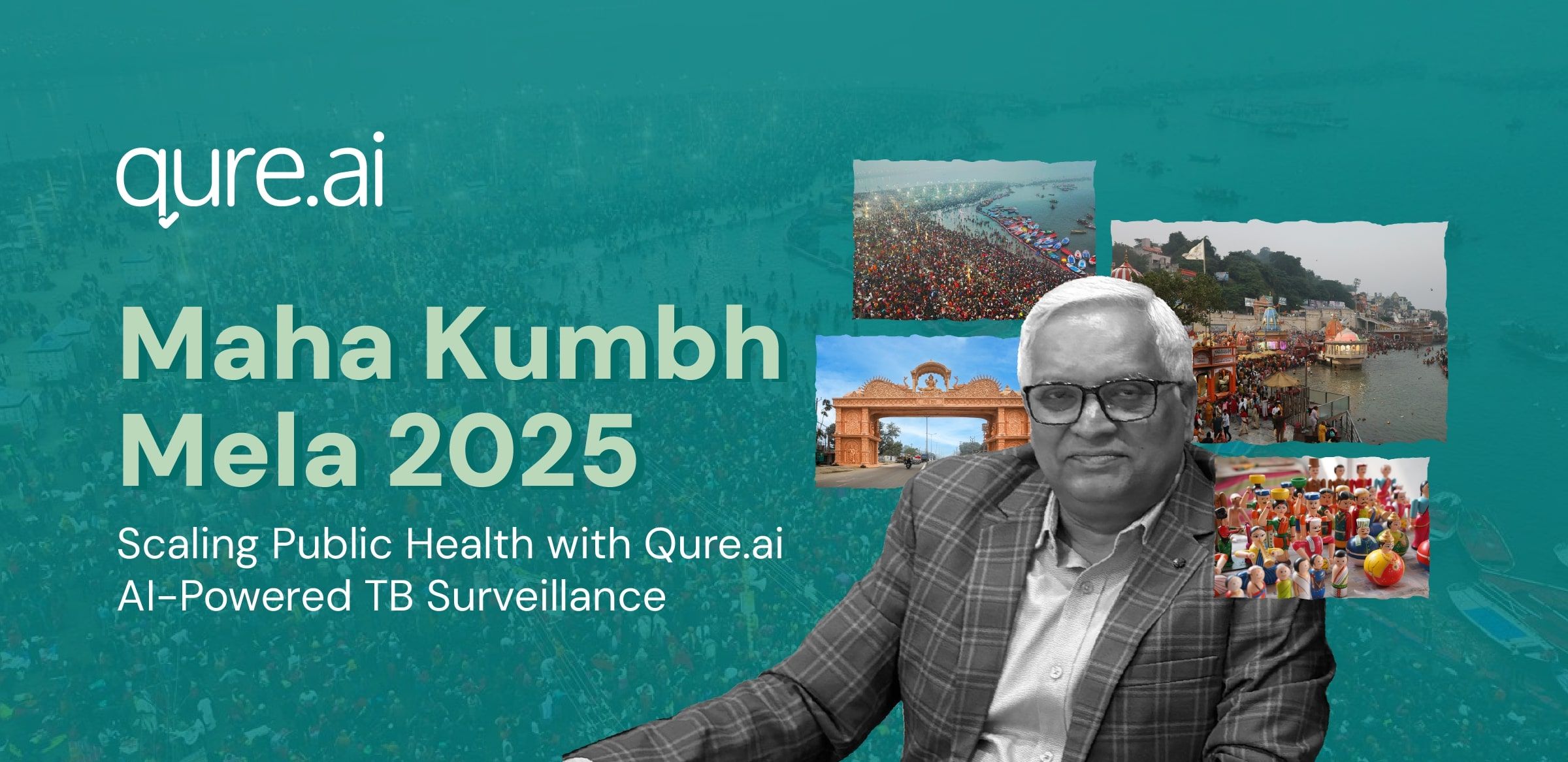- A Unique Opportunity to Blend Tradition with Cutting-Edge Technology for Public Health

Back
- Large-Scale AI Deployment Demonstrates Potential for Strengthening India’s TB Surveillance
Prayagraj, 20th February 2025 — Qure.ai’s artificial intelligence (AI)-enabled chest X-ray interpretation solution, qXR, is now live at the Maha Kumbh Mela 2025. Deployed at the Central Hospital in Sector 2, the biggest medical facility set up for addressing the immediate medical requirements of the pilgrims, the qXR software is being used for quick triaging coupled with TB surveillance. Through incidental screening, the AI solution can automatically flag potential TB cases among individuals undergoing chest X-rays for any reason.
Since its deployment, the AI solution has analysed the chest X-rays done at the hospital and flagged 36.22% as abnormal, with 12% of those showing presumptive signs of TB. This proactive approach is expected to help identify hundreds of TB cases, incidentally, over the course of the event, aligning with the Government of India’s 100-Day TB Challenge and its ambitious goal of eliminating TB by 2025.
The Maha Kumbh Mela, recognized as the world’s largest congregation, presents unique public health challenges. With an estimated 50 crore attendees over six weeks, the scale of healthcare delivery required is unparalleled. The deployment of AI for real-time screening at a mass gathering of this magnitude highlights the potential for technology-driven solutions to strengthen large-scale disease surveillance and early intervention.
Commenting on the initiative, Dr Arun Kumar Tiwari, Chief Medical Officer, Prayagraj, said: "The AI system has provided timely and reliable support in our TB screening efforts. Given the high volume of patients at the Kumbh, the technology has significantly enhanced our ability to prioritize individuals who need further diagnostic evaluation and treatment. This is the first time AI is being used for TB surveillance at a mass gathering of this scale through an incidental screening model. "In a gathering like the Kumbh, AI ensures every chest X-ray is screened for TB, enabling early intervention and breaking the chain of transmission”, he added.
Prashant Warier, CEO and Co-founder of Qure.ai, added: "Mass gatherings like the Maha Kumbh present both an opportunity and a responsibility for public health interventions. Just as surveillance cameras are being used for crowd management and security, AI-driven solutions like qXR are ensuring that healthcare keeps pace with the scale and complexity of the event. The deployment of qXR at the Maha Kumbh is not merely a technology showcase—it’s a scalable model for large-scale TB surveillance. It offers a blueprint for state governments to strengthen their public health systems by incorporating AI for real-time, community-based TB screening, especially in high-risk, high-density settings."
The deployment at Maha Kumbh Mela offers a replicable framework for large-scale TB screening programs in other mass gatherings, high-risk communities, and densely populated urban areas.
Integrating AI into TB programs can:
- Increase diagnostic capacity, reducing the burden on radiologists and clinicians.
- Identify high-risk patients quickly, enabling early interventions.
- Strengthen community-based TB surveillance systems, contributing to the National TB Elimination Program (NTEP).
Dr. Manoj Kaushik, Chief Medical Secretary, Central Hospital, Prayagraj, noted: "We are committed to leveraging technology to improve public health outcomes. The integration of AI in TB screening at the Maha Kumbh Mela is a step forward in our efforts to enhance disease surveillance and ensure timely care for all."
India bears the world’s highest burden of tuberculosis, and early diagnosis remains a critical factor in controlling the disease’s spread. Events like the Maha Kumbh demonstrate that innovative approaches can improve healthcare access at scale. As the country moves toward its goal of eliminating TB by 2025, AI-driven solutions like qXR ffer a way to strengthen detection and diagnosis, particularly in resource-limited and high-density environments.